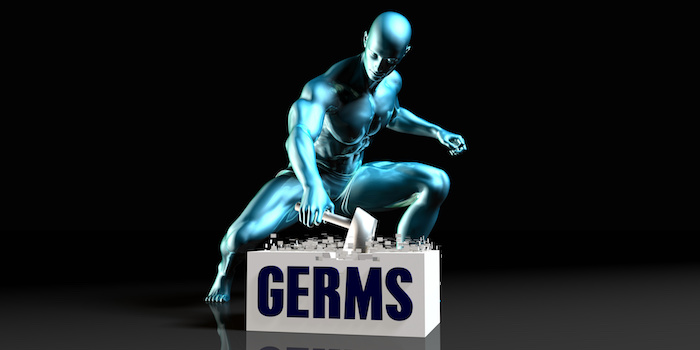
Combating the spread of germs is a universal fight. There isn’t a mother on the planet that doesn’t think about making sure her child is in the cleanest environment possible whenever it’s possible to control it. Unfortunately, the world seems to be conspiring to make everyone sick as soon as they walk outside their front door.
While it might feel that way, it’s truly not the case; other people are continuously looking to how they can stop the spread of germs. From hospital administrators to school officials to medical and dental offices to business owners, preventing the spread of germs is a key part keeping staff, students, and customers healthy during the cold and flu season.
The age-old methods of fighting the spread of germs, copper and silver, are still employed in tech today to stall the spread of germs. Hospitals, in particular, use copper and silver via passive cleaning.
High touch surfaces, such as handles to equipment and doors, can be made with a particularly high amount of copper within them; this makes them more resistant to MRSA, a prevalent Hospital Acquired Infection (HAI). However, copper is not very effective against the other prevalent HAI, C-diff— fortunately, silver can combat that strain of infection. C-diff is primarily contracted through the use of central lines or catheters. Silver’s nanoparticles can be used in these hospital tools to make them resistant to the infection.
Both of these metals have stood the test of time and continue to stop the spread of germs, but new cleaning technologies have been developed to take a more active role in sterilizing hospitals, medical and dental offices, and other public spaces.
One of the great advances in the technology for preventing the spread of germs are robots employing UV light to disinfect entire areas. These robots are mobile, so each area in a hospital, medical office, or even a school, doesn’t need to be equipped individually. The robots scan the rooms they are placed in or floor plans are uploaded into the robot.
Once turned on, a device emerges from the robot and a high-intensity ultraviolet light destroys any bacteria, viruses, or mold on the surfaces of the room. The light penetrates the cell walls of microorganisms and fuses their DNA, ensuring that they’re unable to reproduce and killing them immediately.
These robots can only be used in empty rooms, as the light emitted from the machine is 25,000 times brighter than the sun, thus harmful to germs and people alike. The use of the germ-zapping robot might make turnover time of hospital rooms longer, but the technology has improved to disinfecting rooms in less than 20 minutes. Xenex Lightstrike Germ-Zapping Robot is meant to be used after a room has been cleaned as a secondary protection for patients and doctors alike.
Researching ways to sanitize that are not only efficient but environmentally friendly has become a top goal of the cleaning industry in the past decade. New technologies are continually being developed to use fewer chemicals and energy while achieving the same sterilization effect.
In Indianapolis, at the American Chemical Society National Meeting and Exposition, a new solar steam machine was presented. The goal was to find a way to produce steam hot enough to use for the sterilization of medical and dental instruments. They developed the solar steam machine which, using solar power, can produce steam at temperatures of 239-270 degrees Fahrenheit. These temperatures are then held long enough for medical and dental instruments placed inside to become completely sterile.
While this technology was developed for countries where electricity is not widely available, it’s application for medical and dental practices to become more environmentally friendly while still adhering to cleaning standards are obviously attractive.
The desire to remain environmentally friendly while also protecting against the spread of germs through technology is an admirable goal. However, there are some instances where technology misses the mark. A Business Insider article highlighted the study of Jet hand dryers headed by the University of Westminster in London. The study concluded that the “jet air dryers tend to spread 1,300 times more germs than using paper towels.”
Technology can certainly be used in magnificent ways to help combat the spread of germs, but that does not mean that tried and true practices should be eliminated altogether. As always, washing your hands and wiping down high touch surfaces frequently are top protocol in preventing the spread of germs.
Cleaning Services Group, Inc. prides itself in employing the best technology to serve over 1,500 locations nationwide, including medical and dental offices, hospitals, restaurants, distribution centers, and educational facilities. Contact our customer service team today so we can help you keep your business the clean and healthy environment your staff and customers deserve.









